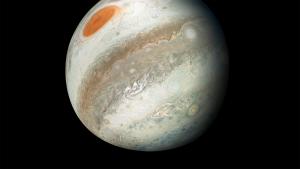
Summer Stargazing Nights - Memorial Day Weekend
- Where:
- Frosty Drew Observatory
- When:
- Friday May 25, 2018 at 6:00 p.m
- Cost:
- $5 Suggested Donation per person 5 years and older
Tonight is the kick off event of our Summer Stargazing Nights season, which runs every Friday through Labor Day weekend, and the forecast looks excellent! We have mostly-clear to clear skies lined up for our extended time slot. There is a chance for some wind in the 15mph range and fog often sneaks in on us this time of year. Though we can deal with the wind and we are awesome at hoping for clear skies. The Moon will be with us at sunset this evening, sporting a brilliant 87% waxing gibbous phase. For lunar observing, this is one of the best phases for catching sight of fantastic lunar geography. Our summer season also brings the return of our Solar Viewing program, which starts at 6:00 p.m. and gives visitors access to the solar chromosphere through our hydrogen alpha telescope, including views of prominence around the Sun, and sunspots along the photosphere.
The Observatory and Sky Theatre will open at 6:00 p.m. this afternoon. We will start off with solar viewing in the Observatory courtyard, showcasing sunspot group AR12711 and any prominence visible. Once the Sun sets we’ll switch to stargazing mode with twilight views of Venus, and the 87% gibbous Moon. The Moon will dominate the skies tonight, though binary stars and planets will rock our view alongside the Moon. Jupiter will be in excellent viewing tonight, with all four Galilean Moons visible as well as the Great Red Spot. In the Sky Theatre we will present a showcase of celestial objects photographed at Frosty Drew Observatory as well as a live projection of the Moon on screens and surfaces around the campus. We will stay open until 11:30 p.m.
Overall, tonight looks like a fantastic night to be under the stars. Temps will be in the low to mid 60’s, which is comfortable, though mosquito inviting. The Moon is in a fabulous phase for observation, but the bright 87% gibbous phase will outshine the Milky Way, nebulae, and galaxies from our view. Check in periodically on our Twitter (@FrostyDrewOBSY and Facebook for updates on what is happening on site. If the Milky Way and dark skies are on your mind, then tonight will not be the night to make the long drive, but if the Moon is your dig, then this is your geek out. So kick off the Memorial Day weekend celebrations and festivities with a fabulous night out under the stars at Frosty Drew Observatory.
--------------------
Weekly Happenings
Scott MacNeill
With Jupiter all the rage this season, we are often observing and talking about the large gas giant. Though views from Earth are fabulous when Jupiter is on the same side of the Sun as Earth, our view is always generally the same as it relates to viewing angle. But Jupiter is huge, about the volume of 1,321 Earths, and views from the vicinity of Jupiter would be a bit different as it relates to viewing angle. Thanks to the NASA Juno mission, which is currently residing in orbit around Jupiter, we regularly catch a sneak peek of Jupiter from this perspective. Juno completes its orbits around Jupiter in a polar orbit configuration, which means that Juno passes over Jupiter’s north pole, orbits southward over the equator, then back around Jupiter’s south pole. At Juno’s closest point in its orbit, the tiny spacecraft will come within 3,100 miles of Jupiter’s cloud tops. That’s crazy close, think of Earth’s Moon, that’s 238,900 miles distant on average from Earth. Check out this fabulous image of Jupiter’s Great Red Spot from the perspective of Jupiter’s south pole looking upward. Though the Red Spot appears to be at the top of Jupiter in the photo, it’s still on the south side, and from this viewing angle, the northern hemisphere on Jupiter is not even visible. Think on that photo for a while, then catch up with the amazing work happening at the largest planet, compliments of the Juno mission.
We can’t stop talking about the Milky Way this time of the year. It’s such an amazing sight to see, and the view never gets old. Though Frosty Drew Observatory is a fabulous location to see the Milky Way, there are a lot of variables that unavoidably get in the way. First, you can’t have the Moon above the horizon to get a great view, moonlight is just too bright and illuminates Earth’s atmosphere to the point where the Milky Way becomes invisible. Secondly, weather is a Milky Way killer! Clear skies are necessary, and not just cloud free skies, but fog free and haze free. Being that this is New England, this does not give us many windows of opportunity. Though occasionally, all these variables work out perfectly and we are reminded how amazing the view is and how awesome our place is in the cosmos. A few weeks ago, such a night happened and Brandon Buckman, a night photographer from Connecticut, happened to be at Frosty Drew Observatory to capture the moment. Check out his fabulous photo, and make plans this spring and summer to see the Milky Way, either at Frosty Drew Observatory or another dark site, and introduce yourself to thousands of stars.
-Scott


